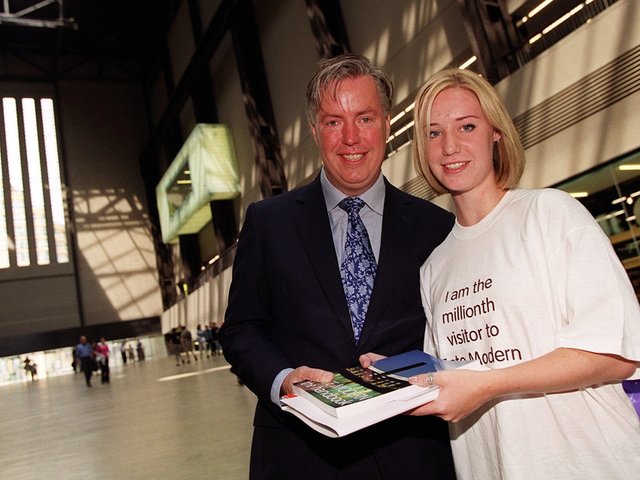The Tate is keen to celebrate the fact that its programme for the newly expanded Tate Modern marks a major shift in its display strategies, including more geographical diversity, more female artists and a greater emphasis on the contemporary. We analysed major solo exhibitions at Tate Modern, from its first show in 2001 to 2015, to see how it was getting on so far, as well as looking at its visitor attendance compared with other national galleries and museums.
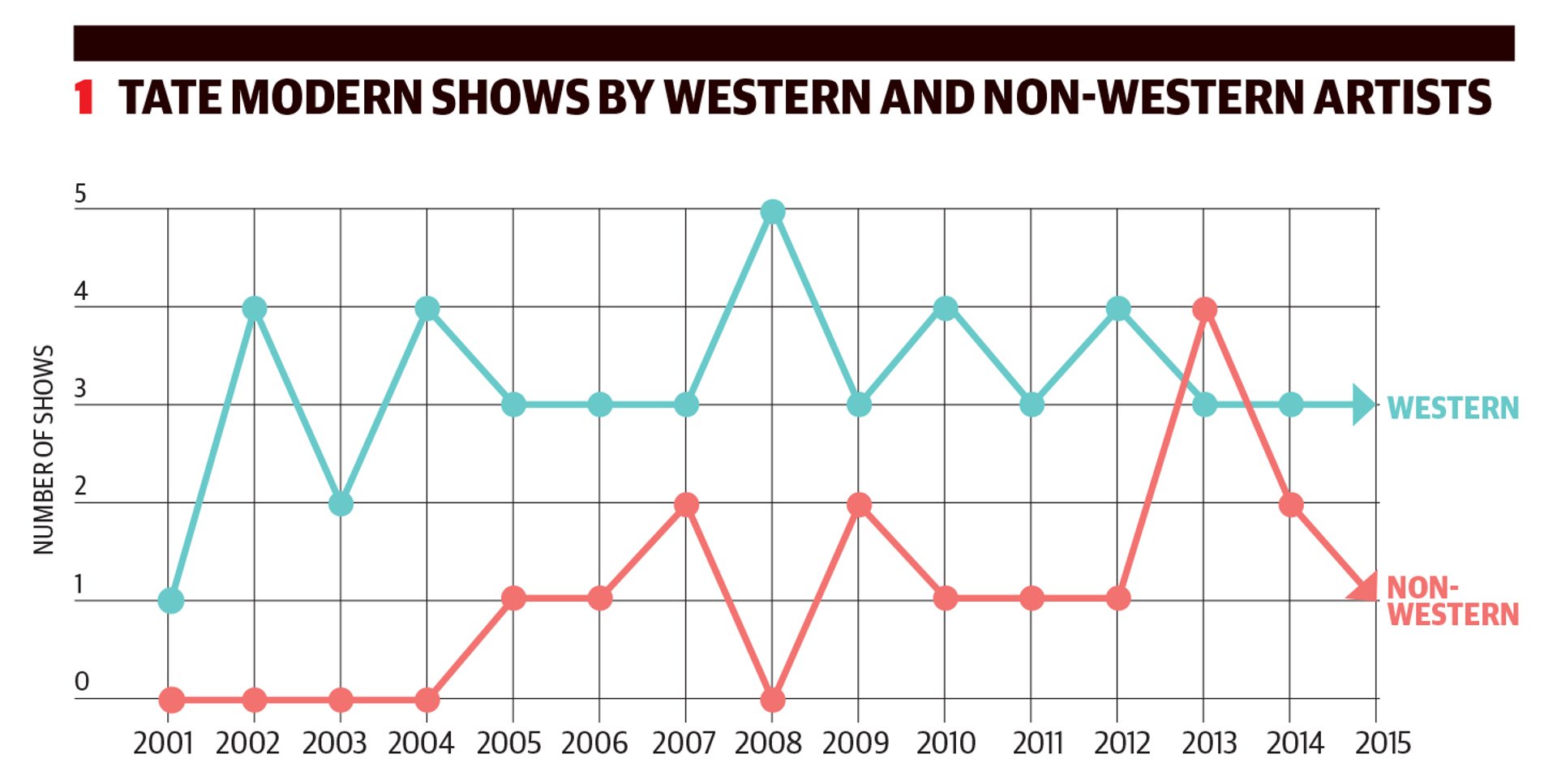
The slow rise in the number of shows—including the free Turbine Hall installations—by non-Western artists hit a peak in 2013 with the opening of three ticketed shows (Mira Schendel, Ibrahim El-Salahi, Saloua Raouda Choucair) and one free exhibition (Meschac Gaba). The Turbine Hall has proved a key space in the introduction of non-Western art: although the first seven artists were all from the West, since 2007 half the Turbine commissions have gone to artists outside of North America and Western Europe.
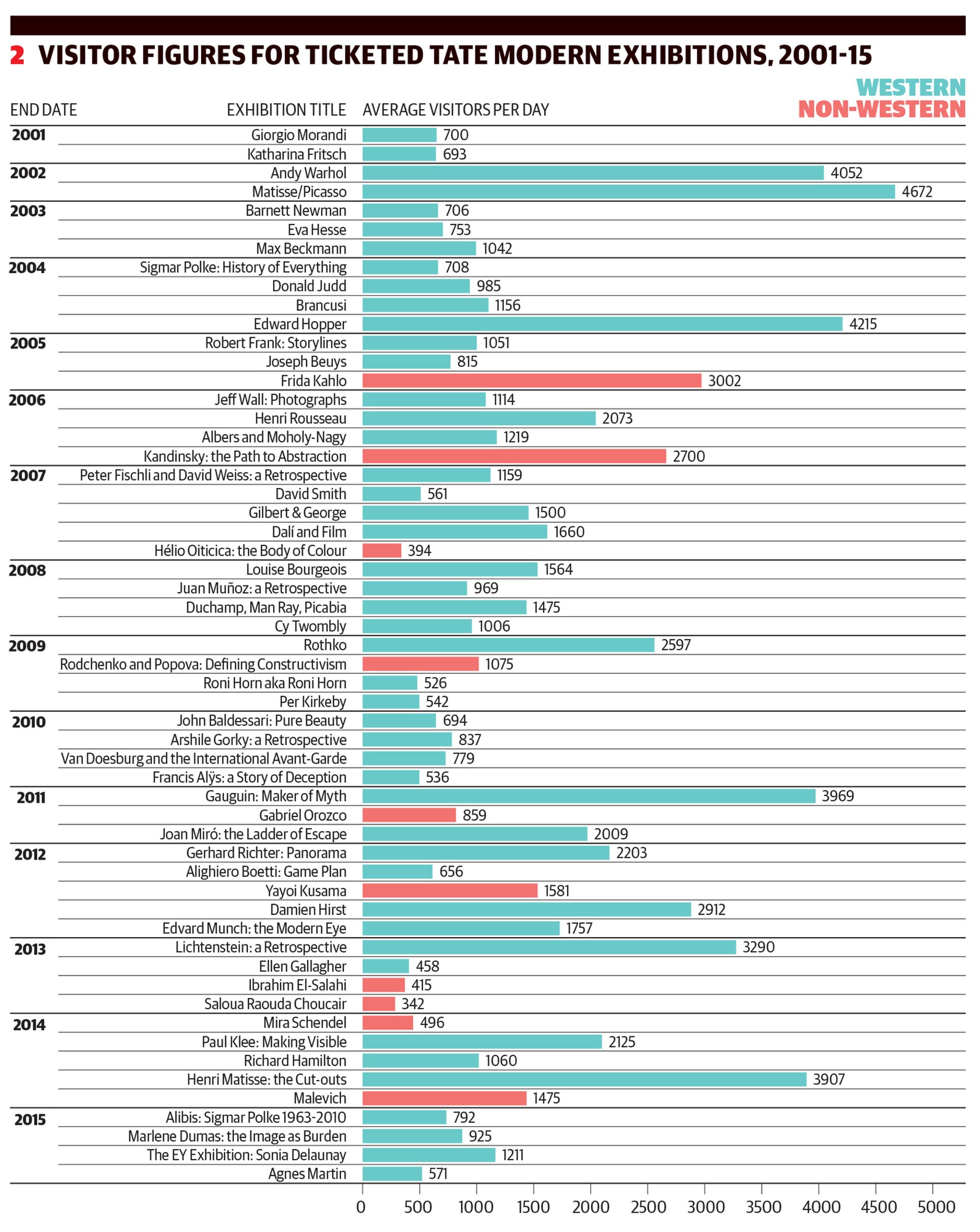
Frida Kahlo and Wassily Kandinsky—who is arguably a Western artist, as he lived for much of his life in Europe and became a French citizen in his later years—are the only non-Western artists to surpass the 2000 visitors-per-day mark. This list does not include the Turbine Hall commissions, which are free. It proves that the Tate has work to do in growing its audiences for a more global perspective on Modern art: the four lowest attendances are for shows by non-Western artists. Click here to see the full chart.

Since 2001—Tate Modern’s first full year and also the year that free museum entry was introduced across the UK—there has been a steady rise in attendance at the five most popular national art museums. Tate Modern was the most popular museum in London in 2006 and hit an all-time high of 5.8 million visitors in 2014. Tate Britain has seen a much smaller rise in numbers, from 1.01 million in 2001 to a peak of 1.6 million in 2010.
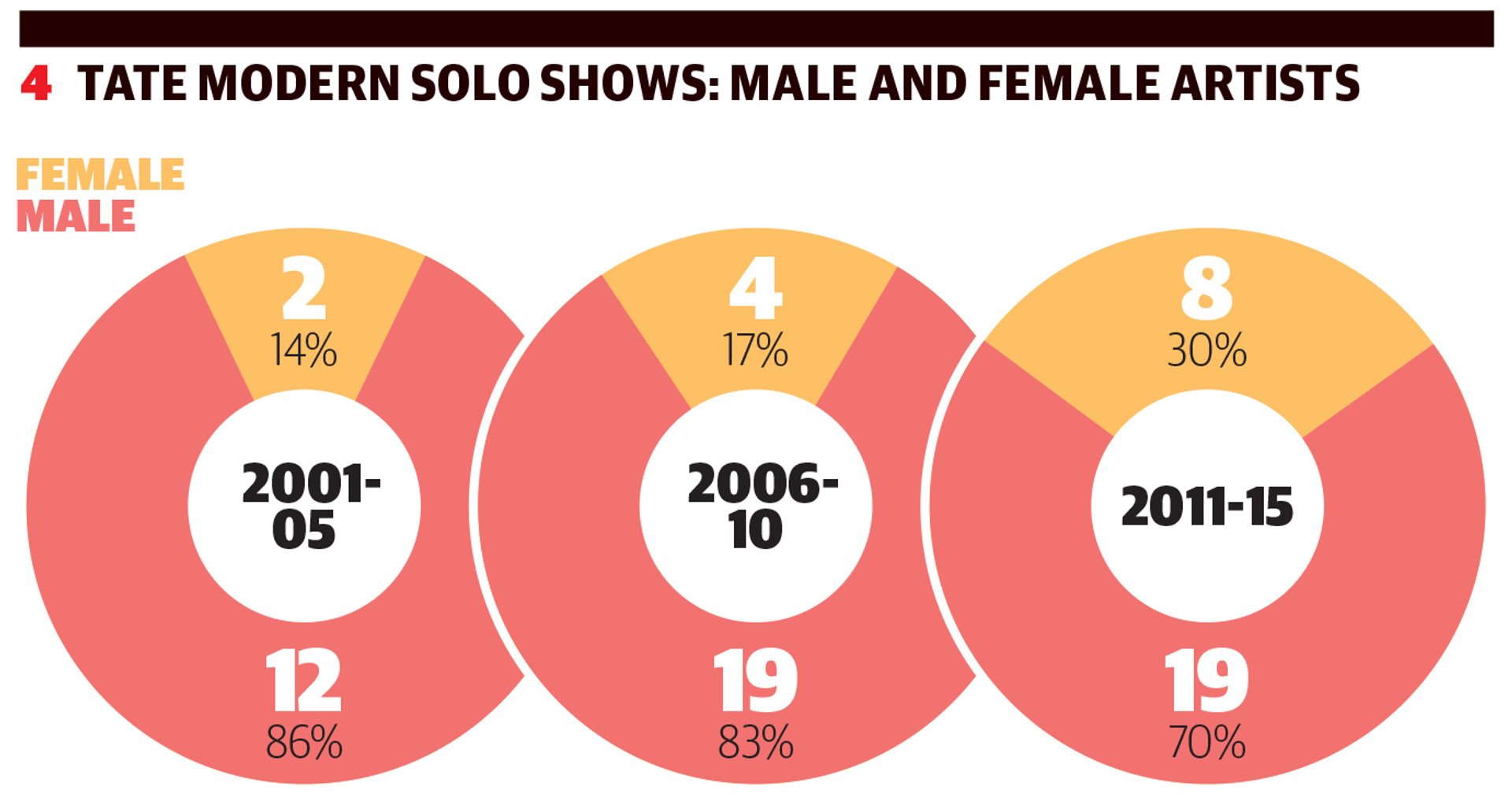
Although the percentage of female artists shown has doubled between Tate Modern’s first half-decade and the last, the percentage is still a paltry 30%. However, in 2015, three of the four paying solo shows were by female artists.
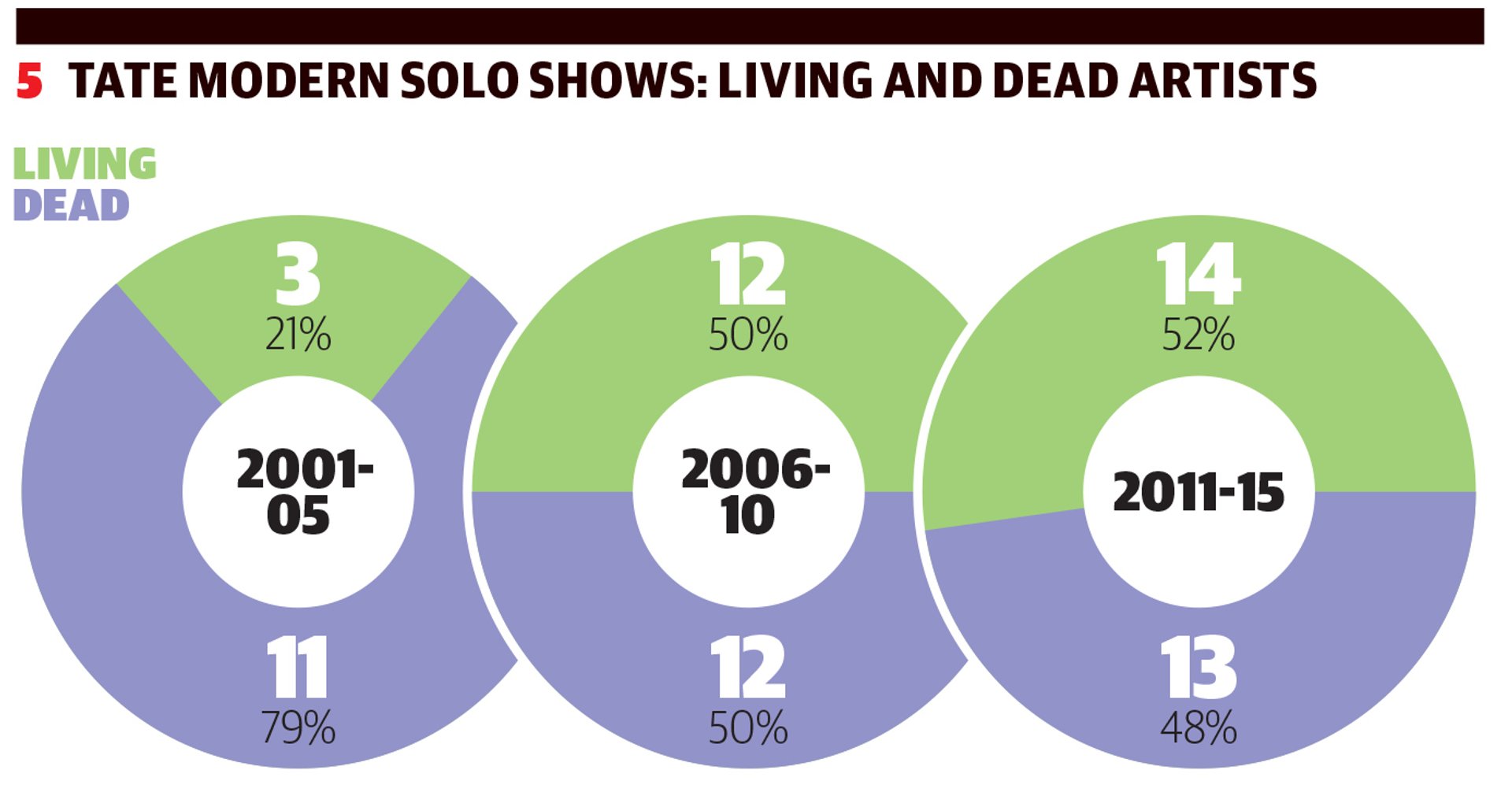
The change from showing mostly dead to a majority of living artists in the past half-decade reflects Tate Modern’s growing emphasis on contemporary art. The public, it seems, still favour Modern over new art: the three most popular shows in the same period were of dead Western men—Gauguin, Lichtenstein and Matisse.
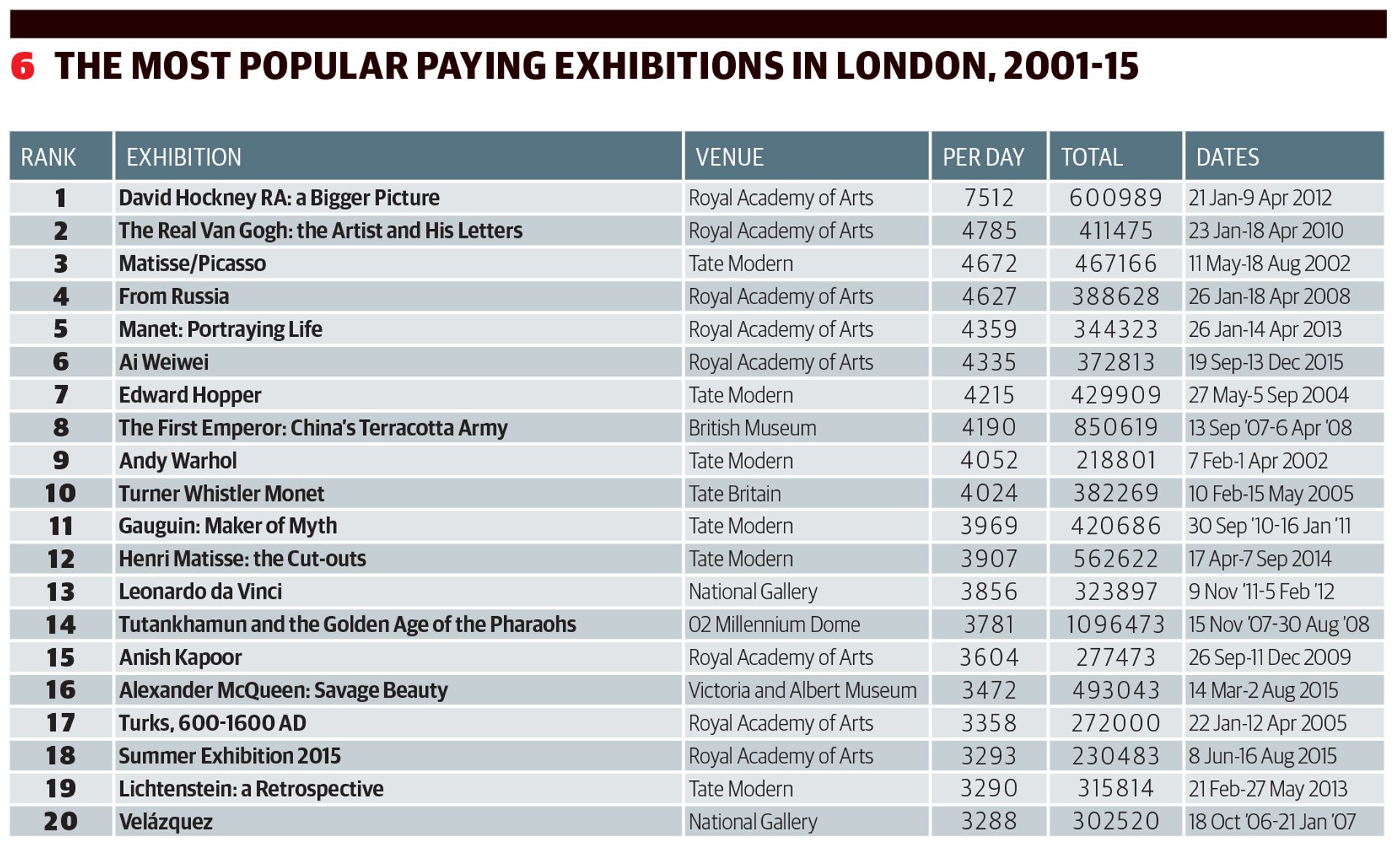
Three Tate Modern shows break into a top ten dominated by the Royal Academy of Arts, which does not receive public funding and does not have a substantial permanent collection, instead relying on temporary exhibitions for footfall (and funding). Tate Britain has only one show in the top 20: Turner Whistler Monet from 2005.
• Infographics by Vici MacDonald


